Top 10 Gemstones Formed with Extraterrestrial Help
There are two types of extraterrestrial gemstones:1) Gems that formed on Earth thanks to asteroid impact - it's when an asteroid hits our planet, and the heat and shock pressures produce gems (these gems are called impactites)
2) Gems that formed in outer space and traveled to Earth with meteorites (these are true "aliens")
Some of the extraterrestrial gemstones are forms of natural glass and not real gems but if you can cut and polish them, and they look good, they are considered gems, similarly to some conventional rocks used as gems (ex. Lapis Lazuli).
Honorable mention: Cut and Polished Meteorite
Cutting and polishing a piece of meteorite often reveals fantastic patterns that are natural art and many people appreciate them. Cut and polished meteorites are used to make pendants, rings, beads, watch faces, cabochons, and other items, such as...guitar picks. It would be quite inspiring to make music with a piece of the core of a meteorite that came from space.
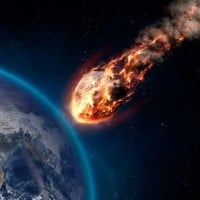
A large asteroid can hit the earth at a velocity of 15 to 20 miles per second. The force at the point of impact exceeds the temperature and pressure required to form diamonds. For diamonds to form, the asteroid just needs to hit rocks that contain significant amounts of carbon (ex. graphite) because diamond is a form of the element carbon.
In Siberia, Russia, there is an enormous crater north of the Arctic Circle, called The Popigai Crater, approximately 100 km (62 mi) in diameter. The crater was created by a large bolide 35 million years ago during the late Eocene epoch. The impactor has been identified as either an 8 km (5.0 mi) diameter chondrite asteroid, or a 5 km (3.1 mi) diameter stony asteroid.
Inside this crater is the largest known deposit of diamonds in the world. These Russian diamonds formed when the asteroid hit the Earth. The shock pressures instantly transformed graphite (a form of carbon) in the area into diamonds.
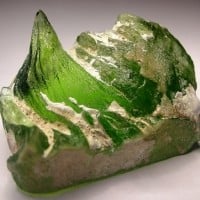
Peridot is gem-quality olivine and they are the same thing.
There are 2 types of peridot: conventional peridot that forms in the Earth's mantle, like most gems, and peridot that forms in outer space and comes to Earth. The only difference is the place of origin. Peridot that formed in outer space is called Space Peridot, Pallasite Peridot, or Palladot.
Peridot crystals were found in some pallasite meteorites (pallasite meteorites are a mix of iron-nickel and olivine). Extraterrestrial peridot is one of the rarest gem materials on Earth.
A famous pallasite meteorite is Esquel that fell in Argentina and weighed about 1500 pounds. The meteorite consists of yellowish green olivine crystals, some of which are gem-quality peridot, in a matrix of meteoritic iron. The Esquel meteorite was once part of a planet or other large body in our solar system that had a metallic core and a rocky mantle.
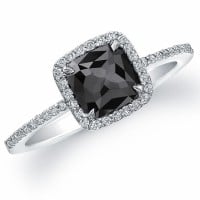
It's the toughest form of natural diamond. There are 6 main theories about the origin of Carbonado, 4 of which include outer space and this proportion says a lot - it's hard to explain many things without including the outer space. None of these 6 theories was widely accepted, including the theories about the extraterrestrial origin. So nothing is 100% sure but it might be true. Here's a summary of what supporters of the extraterrestrial origin hypothesis say.
Unlike Asteroid Impact Diamonds (Russian crater) that formed on Earth due to asteroid impact, Black Diamonds are thought to have traveled to Earth with meteorites. Infrared instruments confirmed that Black Diamonds are formed because of a supernova exploding. Black Diamond's material source was a supernova which occurred at least 3.8 billion years ago. "After coalescing and drifting through outer space for about one and a half billion years, a large mass fell to earth as a meteorite approximately 2.3 billion years ago."
There are many differences between conventional diamonds and black diamonds.
1) Unlike conventional diamonds, black diamonds aren't transparent. They are opaque because they are an impure form of diamond consisting of diamond, graphite, and amorphous carbon. They are like a result of an unfinished process of formation or a result of formation under different conditions.
2) Conventional diamonds are associated with kimberlite (a rock) but there was no kimberlite next to carbonado diamonds - black diamonds are only found in 2 places of the world and it wasn't hard to check. So black diamonds were not formed hundreds of miles below the surface of the Earth where the conditions turn carbon into diamonds. They probably came from space.
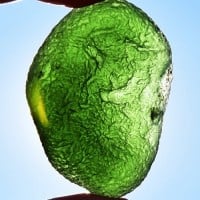
Moldavite is a type of tektite created by a meteorite impact. Tektite is natural glass, a form of molten terrestrial ejecta from a meteorite impact. Moldavite color is green, with different shades of green. When cut and polished, it looks great, like a true gem.
When a large extraterrestrial object strikes the Earth, the heat of the impact flash melts the rocks in the impact area and ejects the rocks in the molten state. These molten masses solidify into natural glass in flight and fall to Earth in the area of the impact.
The meteorite impact that formed moldavite occurred about 15 million years ago in southern Germany (Nördlinger Ries Crater). Moldavite was named for Moldau (Vltava) river in Bohemia (Czech Republic) where the first pieces were found. About 99% percent of all moldavite come from South Bohemian localities.
Moldavite was first introduced to the scientific public in 1786.
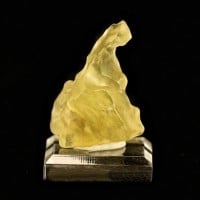
It is thought to have formed during a meteorite impact in the Libyan Desert about 26 million years ago when the impact flash-melted the desert sand. It's logical because Libyan Desert Glass is yellowish. And it's possible because a large meteorite strike can radically deform the rocks, sand, or soil around the point of impact.
Like moldavite, desert glass is considered to be an impactite.
The ancient Egyptians knew about Libyan Desert Glass over 3300 years ago. King Tutankhamun (King Tut), an Egyptian pharaoh, was buried with jewelry with some superb pieces of Libyan Desert Glass.
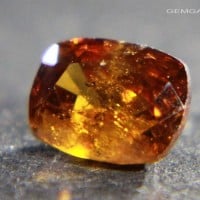
Conventional hibonite is a very rare gemstone that is usually brownish black to black, or reddish brown.
But meteorite hibonite is blue. And even rarer.
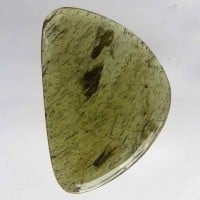
Darwin Glass is green, white or black natural glass that has been dated at about 816,000 years old. It was found in Tasmania, in the Darwin Crater or around it, scattered over a 410 km² (160 miles squared) area.
Darwin Crater is an impact crater. A crater of that size would be created by a meteorite 20 to 50 meters in diameter and its impact with Earth would release 20 megatons of energy.
Darwin Glass is composed of melted local rocks and a component of extraterrestrial material from the meteorite. The highest abundance was found about 2 km from the crater.
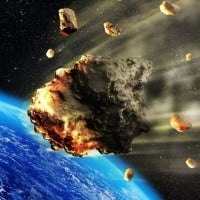
Asteroid Diamonds and Asteroid Impact Diamonds may sound similar but they are different things - they represent those 2 different types of extraterrestrial gemstones I mentioned in the list description.
Asteroid Impact Diamonds, like those in the Russian crater I described in a previous item, formed on Earth with material from Earth - only the force that helped them form came from space (the asteroid that hit the rocks on our planet).
But Asteroid Diamonds don't form on Earth - they come from space travelling with some meteorites that arrive loaded with tiny diamonds already formed in another place. These diamonds are usually nanometer-sized and are called nanodiamonds. Nanodiamonds were discovered in the 1980s.
These Asteroid Diamonds are true "aliens" because their source material is from an extraterrestrial body. But I put them lower because of their small quantities.
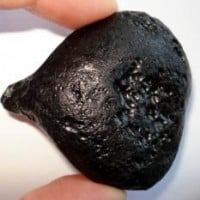
The name Indochinite is derived from Indochina. It's another type of tektite (fragments of ejecta that turned into natural glass), but they are dark black in contrast to the green of European moldavite tektites.
Indochinites are found scattered over world's biggest strewn field - Southeast Asia (parts of China, Thailand, and Cambodia). The impact that produced the tektites of the Indochina strewn field occurred about 800,000 years ago.
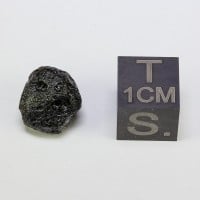
Their formation is similar to Moldavite and Indochinite - a meteorite hits the Earth, melts the rock and turns it into a glassy material.
Ivory Coast Tektites are the rarest of the tektites in any collections. They are black and opaque; often round with small vacuoles. Ivory Coast Tektites were formed 1.3 million years ago. Their source is the 10.5 km diameter Bosumtwi crater in the neighboring country Ghana. The Bosumtwi crater is an impact crater, I.e. created by a meteorite.